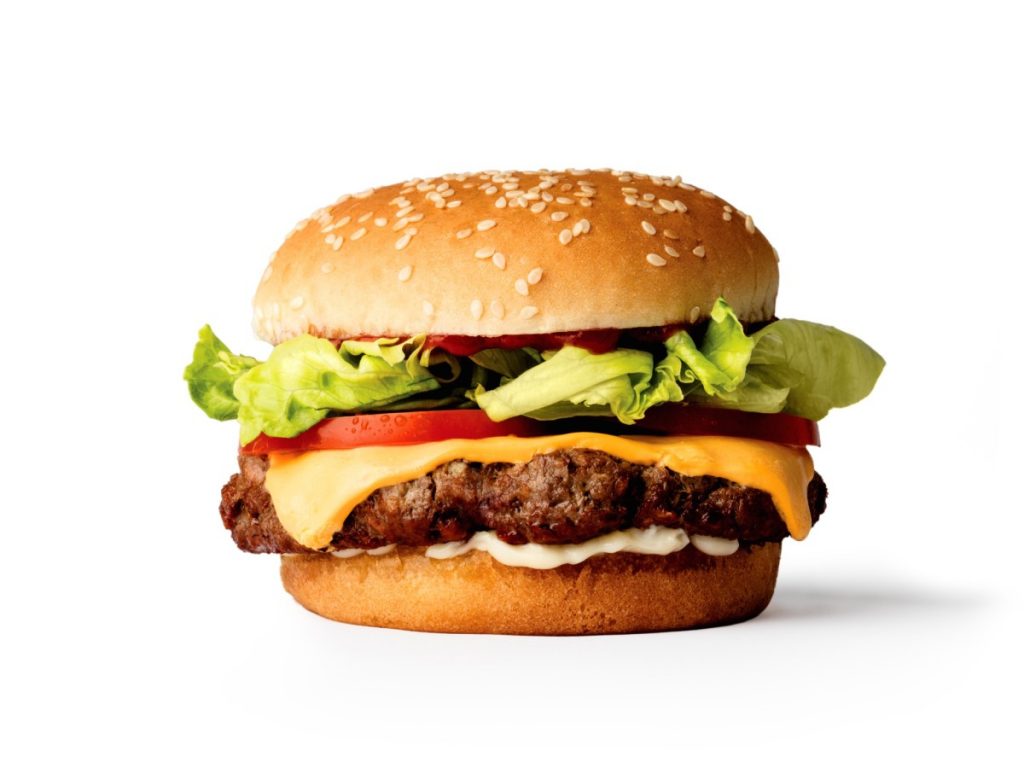Source: OutsideOnline
There’s a famous Gandhi aphorism about how movements progress: “First they ignore you, then they laugh at you, then they fight you, then you win.” That was actually written by the Workshop on Nonviolence Institute as a summary of Gandhi’s philosophy, but regardless, it’s remarkable how often it accurately describes the evolution of causes, from legal cannabis to gay marriage. I’ve been thinking about that quote since I wrote my first piece about plant-based meat (or alt meat, as I like to call it) for Outside in 2014. Back then, we were firmly in the “laugh at you” stage. Beyond Meat, the first of the Silicon Valley startups to use advanced technology to produce extremely meat-like burgers, had been ignored for its first few years, but in 2014, it released its Beast Burger, which was treated by the press and public as a slightly off-putting curiosity. What was this stuff? Would anyone actually eat it? Ewwww.
That product wasn’t very good—I compared it to Salisbury steak—and when Ethan Brown, Beyond Meat’s founder, announced his intention to end livestock production, you could almost hear the National Cattlemen’s Beef Association laughing in the background.
But I didn’t laugh. I knew it would keep getting better and beef wouldn’t. And I thought the bar was pretty low. Sure, steak is great, but ground beef makes up 60 percent of beef sales, and most of it is more Salisbury than salutary, a greasy vehicle for the yummy stuff: ketchup, mushrooms, pickles, bacon, sriracha mayo. I knew I wouldn’t object if my central puck came from a plant, as long as it chewed right and tasted right. I suspected others might feel the same.
In the following years, Beyond Meat was joined by Impossible Foods, a more sophisticated startup with even more venture capital. Its Impossible Burger was way better than Salisbury steak. All the cool cats started serving it, from David Chang in New York to Traci Des Jardins in San Francisco. My conviction grew.
Part of the appeal of the new burgers is their smaller environmental footprint. Beef is the most wasteful food on the planet. Cows are not optimized to make meat; they’re optimized to be cows. It takes 36,000 calories of feed to produce 1,000 calories of beef. In the process, it uses more than 430 gallons of water and 1,500 square feet of land, and it generates nearly ten kilograms of greenhouse-gas emissions. In comparison, an Impossible Burger uses 87 percent less water, 96 percent less land, and produces 89 percent fewer greenhouse-gas emissions. Beyond Meat’s footprint is similarly svelte.
Yes, a good argument can be made that small-farm, grass-fed beef production (in places that can grow abundant grass) has a very different ethical and environmental landscape, but unfortunately, that’s just not a significant factor. America gets 97 percent of its beef from feedlots. And feedlots are irredeemable.
By 2018, sales of both the Beyond Burger and the Impossible Burger were surging, and the companies began to ink deals with restaurant chains. Beyond Meat got Carl’s Jr. and A&W (as well as supermarket chains like Food Lion and Safeway), while Impossible got White Castle.
I tracked down a White Castle shortly after the Impossible Slider arrived in the spring of 2018. I’d never been to a White Castle, so I ordered an Impossible Slider and a regular slider. The Impossible was…fine. About what you’d expect. White Castle steams all its meat, which is hard to get past, but with plenty of cheese, it went down easy.
The regular slider, on the other hand, was horrific. I peeled back the pasty bun and stared at the fetid shingle inside. It was appallingly thin and grimy. It made the Impossible Slider look lush and juicy. The bar for fast-food burgers is even lower than I thought. Nobody will miss these shitty little brown things when they’re gone.
Perhaps this explains why the chains are latching on to plant-based burgers as if they were life rings. White Castle initially tested its Impossible Slider in just a few locations in New York, New Jersey, and Chicago in April 2018. It was such a hit that the company quickly expanded the program to all 380 outlets. “People are coming back for it again and again,” White Castle’s vice president, Jamie Richardson, said with a touch of astonishment.
Read the full article here: https://www.outsideonline.com/2399736/impossible-foods-beyond-meat-alt-meat


